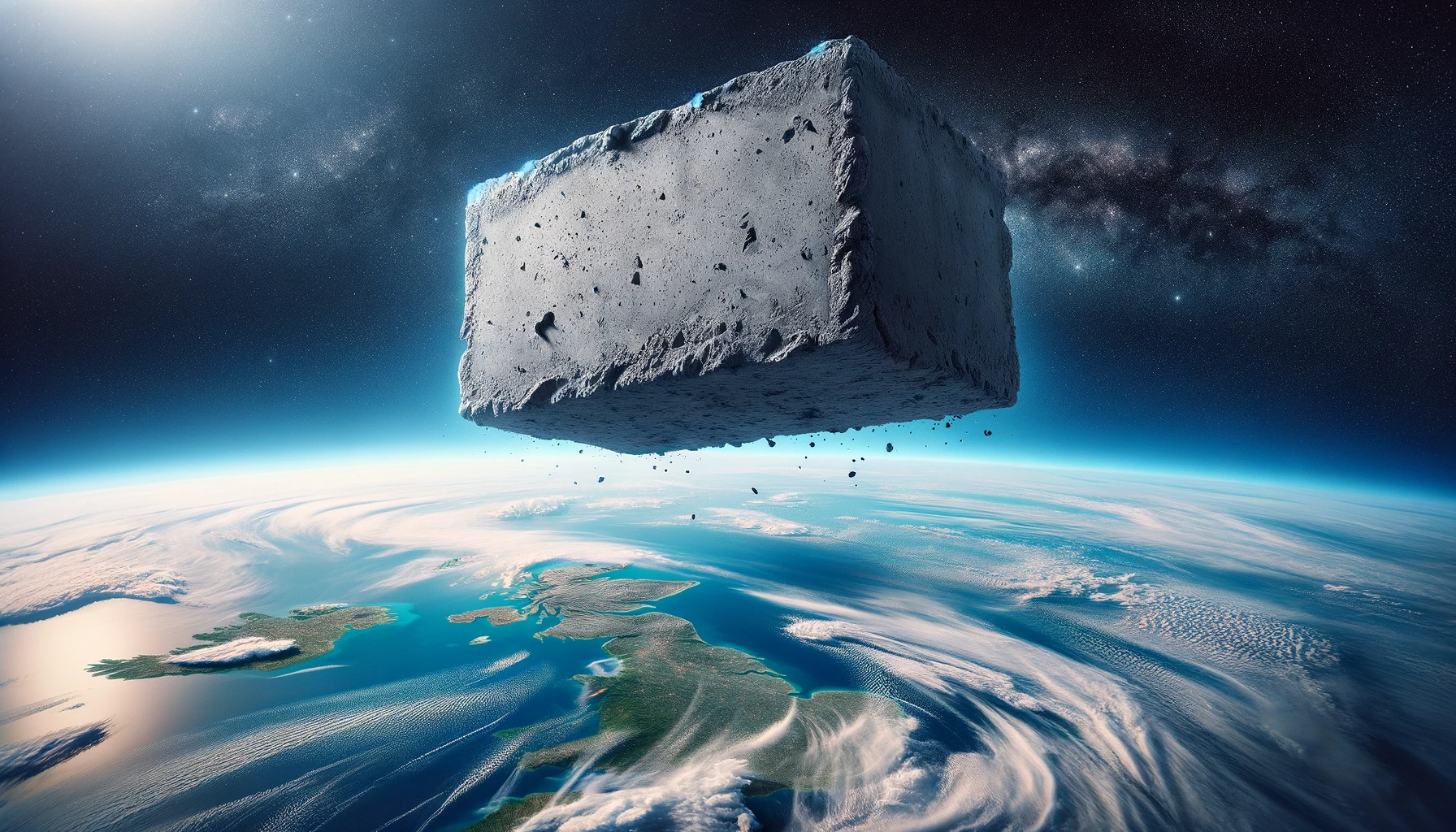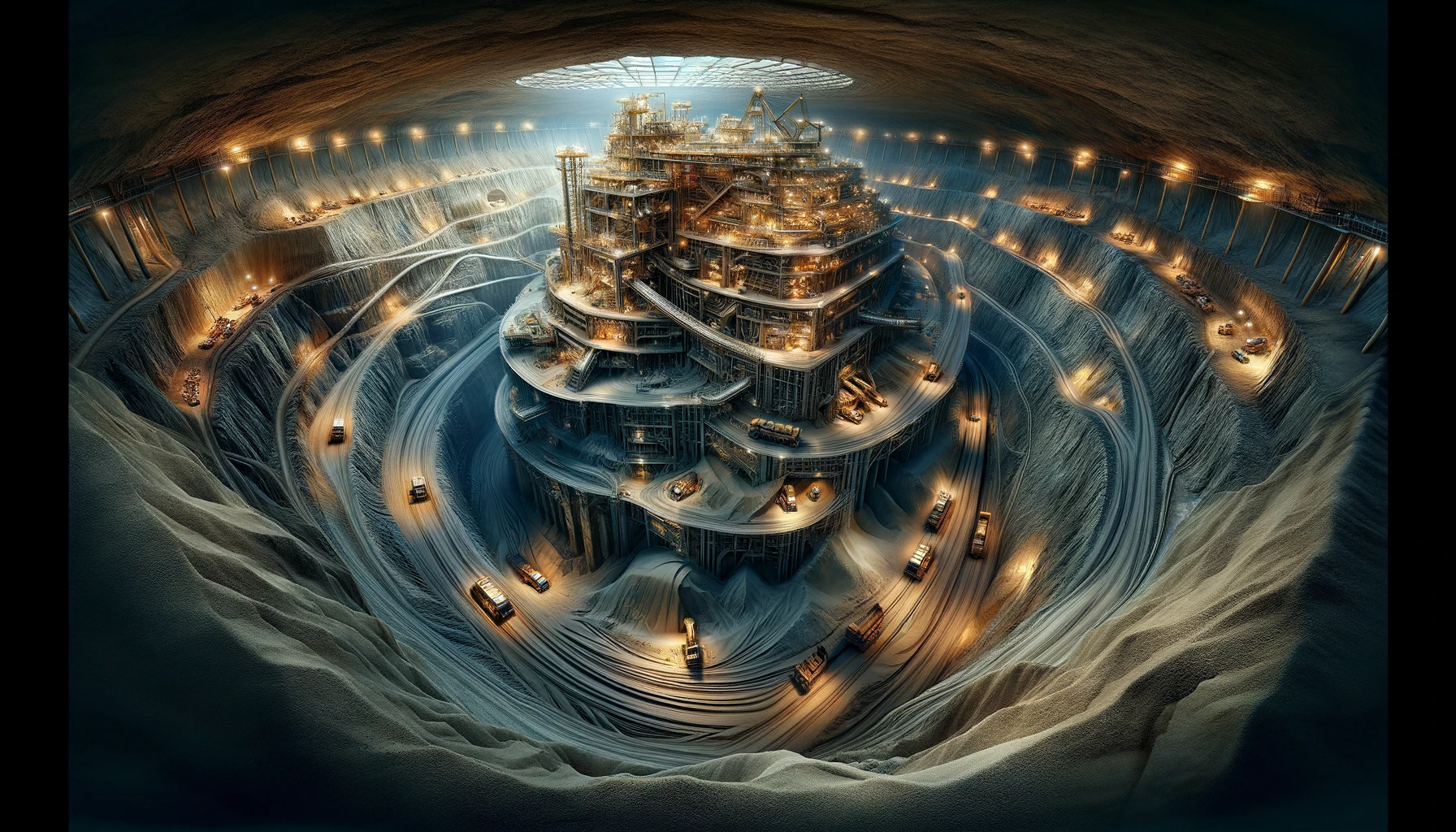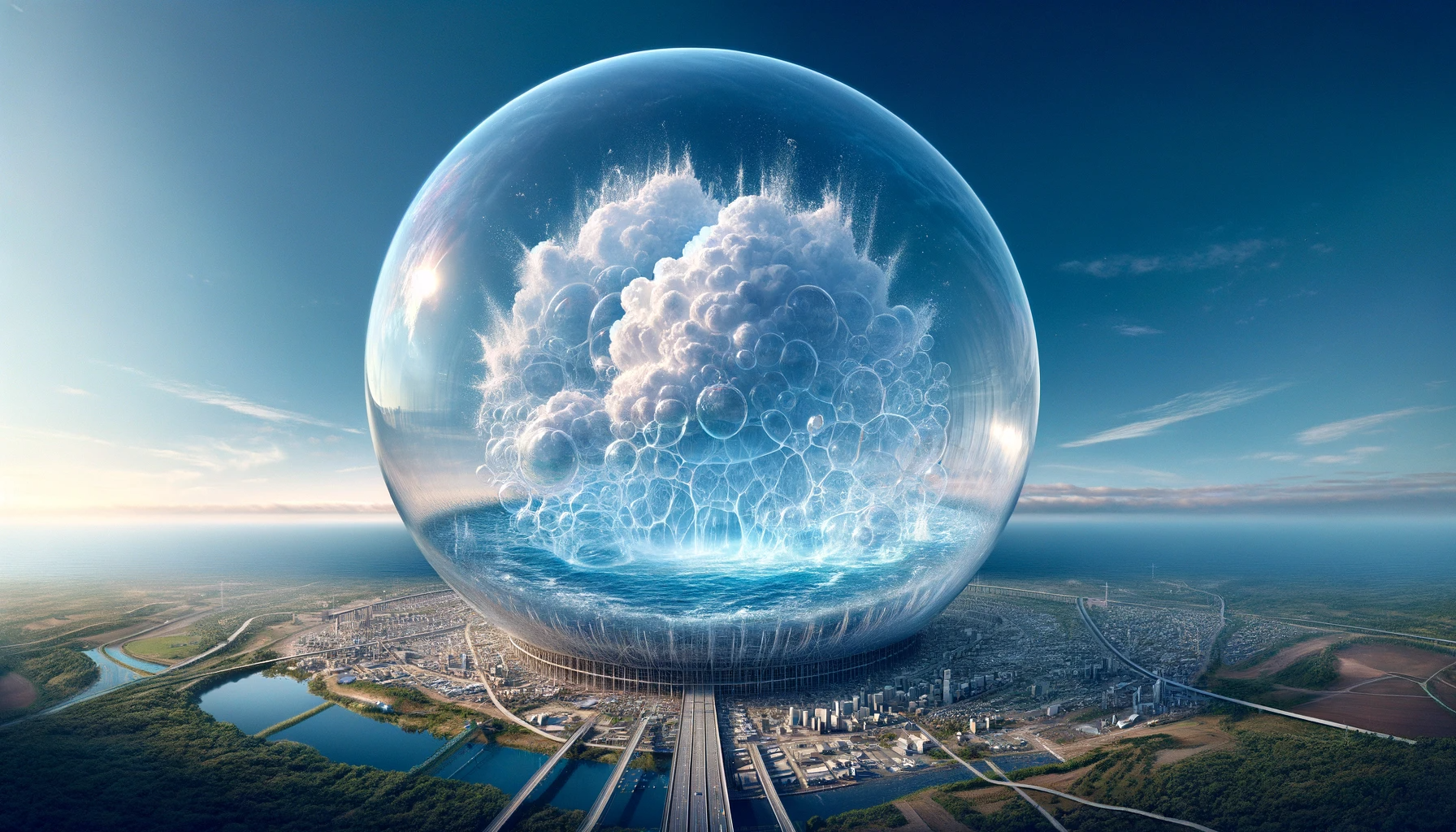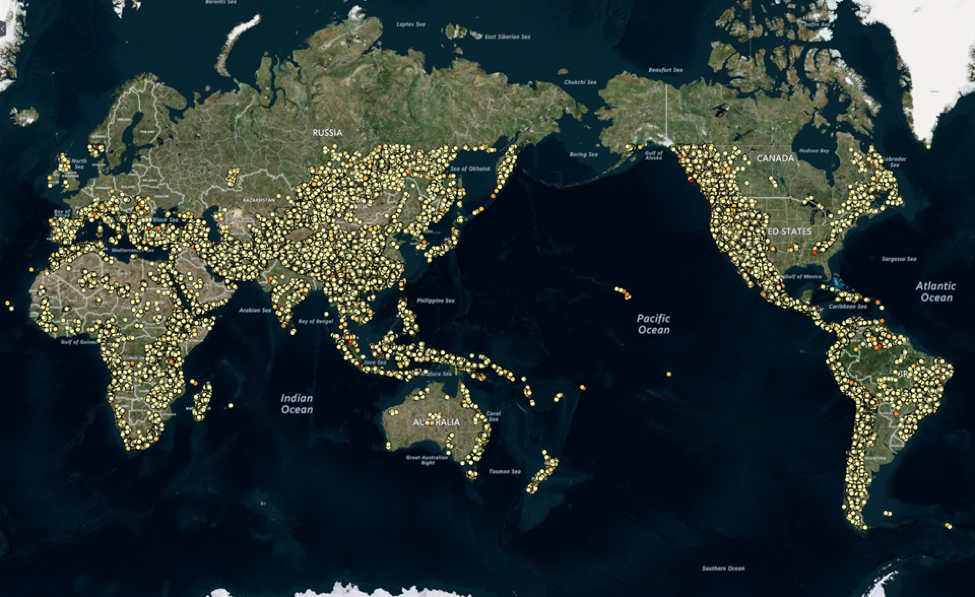Sign up for daily news updates from CleanTechnica on email. Or follow us on Google News!
In my recent article celebrating the great month that pumped hydro had, between the Loch Ness Red John facility selling to Statkraft, the UK finally settling on cap and floor for the technology and China having 365 GW of power and 4 to 8 TWh of energy storage under construction, I included a throwaway line.
As a reminder, pumped hydro is the gravity storage solution that actually works, unlike concrete blocks, elevators and hillside rail systems.
This triggered all of the people who think that lifting small masses small distances is a remotely sensible energy storage technology, the ones who think unused office elevators, water towers, and mines and big piles of sand are a massive source of untapped storage as well.
So it’s time, once again, for the basics and a bunch of examples so that people can stop fantasizing about elevators, water towers, or trains, and focus on water and existing hills instead.

Let’s start with the basics of the physics. Gravity storage works because of potential energy. That’s simply a mass higher up. As it goes down, the potential energy turns into kinetic energy, the energy of movement. As it goes down, we can harvest that energy. It takes energy to move the mass upward, and can get varying degrees of energy back from it on its way down.
This is all subject to the laws of thermodynamics. Let’s use British author and scientist C.P. Snow’s version:
- You can’t win (that is, you cannot get something for nothing, because matter and energy are conserved).
- You can’t break even (you cannot return to the same energy state, because there is always an increase in disorder; entropy always increases).
- You can’t get out of the game (because absolute zero is unattainable).
What that means is that if you put 100 MWh into an energy storage system of any kind, you will get less than 100 MWh back. That’s usually important, but not with energy storage systems that aren’t pumped hydro using existing hills. There’s no way around the three laws, there’s no reinterpretation of them that permits them to be sidestepped (as one comment I saw recently said for their technology) and everyone has to play by the same rules.
Okay, so it’s energy and we’re going to get less out than in. How do we figure out how much energy? That’s easy. Multiplying the mass times the acceleration due to the force of gravity times the height gets the potential energy, the maximum amount you can get back. That’s in joules, which isn’t helpful for the average person who never uses joules, but a million joules is 0.277778 kWh. The other way around, a kWh has 3.6 million joules.
Multiplication like this is taught in Grade 5. The physics of potential energy due to gravity is taught in Grade 7. If at any point this is a bit tough for you, ask a 13-year-old to help out.
Because this is metric, we use meters and kilograms, and gravity is measured in meters per second squared, 9.8 of them to be somewhat precise. Let’s start with a hypothetical situation, a one metric ton or 1000-kilogram block we move up 100 meters. Nice round, simple numbers.
1,000 kg * 9.8 m/s^2 * 100 m = 980,000 joules. That seems like a big number, but that’s only about a million joules which means it’s equal to about 0.277778 kWh.
A Tesla needs about 14.4 kWh to travel 100 kilometers, so this one-ton block moving down 100 meters is enough to drive a Tesla just under two kilometers. Another way to think of it is that it is enough to boil a pot of water.
For those unfamiliar with metric, that’s close to the length of an American football field, but straight up and 2,200 pounds. To boil a pot of water. Electric cars are really efficient.

Okay now that we have the basics, let’s take a couple of examples. Let’s start with the various rail-based gravity storage solutions. I’m fairly familiar with heavy freight rail and know that they have to play by the rules just like everyone else.
Steel wheels on steel rails means that heavy trains require less than 2% grades, otherwise they can’t go up hills. That means you need a very long set of rails to get very much height. The length of the train means that it can’t get it all up or down the hill, so you are working with a portion of the slope.
Let’s load the rail cars up to the maximum 130 metric tons for heavy freight rail each. Let’s use relatively standard 18-meter cars. Let’s use 50 cars for a decent length and mass train. That makes it 900 meters, almost a kilometer long.
At 2% grade, you’d need 10 kilometer of track to get 200 meters of head height. But the trains length actually means you’d be only getting about 9 kilometers of rise of the center of gravity, so it’s actually 180 meters.
50 cars * 130 metric tons is 6,500 metric tons total mass.
Mass * gravity * height = 6,500,000 kg * 9.8 m/s^2 * 180 meters = 11,466,000,000 joules. That’s about 3.2 MWh.
The current Tesla Megapack is standard shipping container size height and width, 29 feet long and 8.5 feet high, and stores 3.9 MWh. You can put them in the corner of parking lots.
Yeah, an almost kilometer-long train with ten kilometers of track has a lot less energy storage than a shipping container full of Tesla’s batteries.
There are funicular railroads that go up steeper pitches, but they have vastly less mass because the strain on the cables gets so high that they snap. Shorter distances up steeper slopes involve similar heights but vastly less mass, so energy storage drops by one or two orders of magnitude.
This is bleedingly obvious to anyone who has spent any time doing mass and energy calculations or remembers anything they learned before high school, which is why people like me assume that firms promoting mechanical gravity energy storage that isn’t pumped hydro will fail and disappear without a trace, forgetting the gullibility of venture capitalists, the venality of SPAC pump and dumpers and the credulity of retail investors. Fools and their money are soon parted. Hopefully this will inoculate a few people.

By now, you know what the questions are. How tall is the center of gravity of the mass? How much mass is there? Feel free to use that incredibly difficult scientific tool, Google, to help you answer these questions.
Nah, I’ll just do it. They range from 40 to 50 meters. If you’ve read this far, your spidey sense will be tingling already. That’s just not that much. What about mass? On average, about 3,800 metric tons of water. Well, your spidey tense must be ringing alarm bells right now. But still, let’s do the math. Let’s give it a break and assume a 50-meter water tower.
But that mass isn’t all 50 meters off the ground. Water has a thousand kilograms per cubic meter, which is an example of why the rational parts of the world use metric. That means 3,800 cubic meters in a ball. How big on a side is that with the shell? About 16 or 17 meters in diameter. My guess before calculating was 15 meters, which is 0.6 meters off the diameter if the ball of water was just floating in space. Not a bad guesstimate, and par for the course for anyone who spends any reasonable amount of time with this kind of thing. My being close isn’t a feature or something special in other words, it’s just an occupational hazard.
Okay, so the center of gravity of the water is only 37.5 meters off of the ground. Big red lights and sirens should be going off now.
3,800,000 kilograms * 9.8 m/s^2 * 37.5 = around 390 kWh. That’s maybe half a Tesla Semi battery pack and a tenth of a Tesla Megapack.
But wait, there’s more. Why do water towers exist? To provide water pressure to communities so that water actually comes out of taps and fire hydrants when needed in sufficient volumes. What is water pressure? Energy. Oh, wait. If we take all of the energy out of the water as it comes out of the water tower, that means there’s no energy left for water pressure. Dribbling showers and fire hoses are no fun at all.

What haven’t I ripped to shreds with Grade 7 physics yet? Oh, yeah, mines and sand. I really wish people weren’t serious about this, but they are.
There are a couple of ideas, but the looniest one is sinking sand into an empty mine in big buckets with regenerating winches, dumping the sand out at the bottom and having big vehicles push the sand down side tunnels. To ‘store’ energy, the vehicles working underground would scoop up the sand and dump it back into the buckets which would be raised to the surface.
Stop and think about that for a minute. Using a lot of energy underground to push sand around when the point is to store energy. Why is that being done? Well, sand isn’t a liquid, it’s just a bit liquidy some of the time. Sand flows, but not like water. Pour water into a mine and it will fill every nook and crevice because it’s molecules of dihydrogen monoxide.
Water molecules are 0.275 nanometers. Sand grains average a millimeter. Nanometer, millimeter, what’s six orders of magnitude among friends? Water molecules are about 4 million times smaller than sand, and they aren’t all lumpy, coarse and spiky. They slip past one another better than the finest high-thread count Egyptian cotton or silk sheets it’s possible for you to imagine.
So this is clearly a deeply stupid idea, and yet I’ve seen people who seriously proposed it. The inefficiency is off the charts, and just imagine even autonomous electric front-end loaders driving constantly through a dust cloud of smaller sand particles, getting in their gears.
The alternative idea is to put a lot of sand on a single elevator with huge winches that just goes up and down in a big, deep mine shaft. This one at least has the potential to be viable. Let’s pretend we can find a kilometer-deep mine shaft that’s abandoned and hasn’t filled with water up to the 30 meters below ground level mark. Oh, wait, we can’t find something like that because ground water? Ignore reality for a minute.
Mine shafts have a diameter of 5 to 20 meters. Let’s pretend we have a huge 20-meter mine shaft that’s a kilometer deep and not full of water. Okay, how big a load of sand can we put on an elevator in a 20-meter diameter shaft? Let’s assume we can put it in a big bin ten meters tall. So that’s 20 meters in diameter and 10 meters tall of sand. That’s a lot. For Americans, that’s 66 feet across and 33 feet tall.
The volume of a cylinder that size is 3,142 cubic meters. By the way, calculating that is taught in 8th Grade. We’ve advanced all the way to 13-year-old children in basic schools in our math and physics.
Sand has a density of about 1,600 kilograms per cubic meter. That’s about 5,000 tons of sand. Hmmm. Do we have winches that can lift 5,000 tons? Errr. No. That’s almost exactly ten times bigger than massive winches for deepwater construction. Okay, let’s pare that back. Maybe 1,000 tons of sand? Cut the depth to two meters instead? Sure. Let’s do that math, once again, for this fictional, huge, water-free, deep mine shaft, one of which might exist in the world.
1,000,000 kilograms * 9.8 m/s^2 * 1000 meters = about 1,360 kWh. That’s 1.4 MWh.
That isn’t very impressive. A kilometer-deep shaft with a massive elevator full of two meters of sand worked by a couple of the biggest winches ever built and it’s only as much as a third of a Tesla Megapack that’s 29 feet long and 8.5 feet tall.
By the way, sand is dirt cheap and the physics of winches means that it really doesn’t matter if you make the weight denser, for example by using lead. Doubling the weight still only gets to 2.7 MWh, which is an awful lot of engineering and construction for a return well below something you can order and have dropped in the corner of a parking lot.

Are we done yet? Not a chance. There are a bunch of people who think that office building elevators are an untapped resource of energy storage.
They think that at night, big dollies of heavy stuff can be shoved into freight elevators in the basement, lifted up to the 75th floor, and rolled into executive offices and board rooms, then in the morning, dropped down again to generate electricity.
I really wish people weren’t saying this seriously. I really, really do.
Okay, let’s make believe for a bit. How much weight can office building freight elevators lift? Big ones can manage 9 tons. What’s that sound? The sirens of spidey sense whooping. What’s that noise? The multicolored lights of spidey sense flashing. Nine tons? We’ve been talking about thousands of tons. Nine of them? Really?
Okay, but 75 stories. That’s a lot, right? That’s like, really high? Sure. Maybe 225 meters. Okay, Grade 7 math time again.
9,000 kilograms * 9.8 m/s^2 * 225 meters = about 5.5 kWh.
Some sweaty lackey is going to load nine tons of paper or sand or stale birthday cake onto a massive dolly, grunt it into a freight elevator, then grunt it into a boardroom, then reverse this process the next day, and this is an energy storage solution? The first Tesla Powerwall held 7 kWh, if memory serves, and was light enough to mount on a wall out of the way, where it just sat and presumably blinked with little LED status lights.
Let’s just throw a big bucket of ice water onto this already absurd nonsense. Have you heard of counter weights? Elevators have these massive weights that go up when elevators go down and vice versa to counteract all the weight of the elevator, cable, friction and the office workers. The point of that is efficiency in moving weight up and down. All of those elevators don’t have even 5.5 kWh to spare because they’ve been designed to avoid needing it.
The people who think this idea is good have zero knowledge of energy, Grade 7 math, or the absolute basics of elevators. Perhaps they were homeschooled in the prairies by Luddites or something. Pick your reason why this completely absurd idea was actually gaining traction.

So let’s talk closed loop, off-river, pumped hydro storage. As the article headline says, it’s the only real gravity storage option. Why? Well, because it has billions of kilograms of mass hundreds of meters of distance between top and bottom. Geography creates the height for free, just requiring a 10-meter diameter tunnel be dug through it, which admittedly is expensive and has long-tailed risks related to construction. And water’s tiny molecules don’t need any help to organize themselves. None of those sweaty stressed office workers. None of those massive front-end loaders pushing sand down tunnels. Just pumps.
The mass and height are both big numbers. The mass especially is a really big number. And water is dirt cheap. This isn’t filtered, bottled, purified, chlorinated water. It’s just lake or river water. The water isn’t consumed. It goes up. It goes back down. It goes up again. Ad nauseum. If water could get bored, it would. Some of it evaporates every year, so the system needs to be topped up. Nothing-burger.

Okay, let’s do some math. Let’s go to the Australia National University green field GIS study of potential paired reservoirs that aren’t on existing water pathways, that are close to transmission, that aren’t on protected land, and that have over 400 meters of distance between top and bottom reservoir. It found 100 times the potential capacity for energy storage as the entire global requirement for energy storage in the end game.
Only 1% of the sites have to work out in order to provide all the energy storage for a fully electrified world powered by renewables. And a few blockers have already been eliminated. Close to transmission and not on protected land, remember? Someone complained to me recently that exactly one of 616,000 sites identified had 14,000 people that would be displaced. So go to the next site already.
Math, though. Let’s pick a 500-meter head height site. Let’s pick a billion liters of water, a gigaliter weighing a billion kilograms, a million tons. Wait, what’s not happening? Your spidey sense isn’t flashing lights and blaring alarms. These are big numbers on both sides.
1,000,000,000 kilograms * 9.8 m/s^2 * 500 = 1.4 GWh of grid storage.
Oh. GWh. Significant grid storage. Okay, now we’re talking!
Well, those must be big reservoirs for a gigaliter at 500 meters, right? No. A square kilometer up top, a square kilometer at the bottom. Ponds.
Let’s take the three Intelligent Land Investment sites in Scotland, including the Loch Ness Red John site that was recently sold to Norway’s Statkraft. They are designed to use lochs as their lower reservoir and turkey’s nest reservoirs on overlooking hills as upper reservoirs. Lots of water. Lots of height. Free water because it’s just sitting there in the lochs, waiting to be pumped uphill in a very low environmental impact way.
2.5 GW of power capacity. 60 GWh of energy capacity.
Tesla Megapacks can deliver about 2 MW of power. This is like 1,250 of them. They can store about 3.9 MWh of energy. This is like 15,000 of them.
Pumped hydro is the only real gravity storage solution because it uses a dirt cheap, high density, easily pumped liquid that finds its level automatically and uses existing geographical feature to create big height differences. Every other gravity storage solution is kids playing around in a sand box.
I’ll repeat this. Grade 7 math is all that’s required to figure this out. Entitled Hollywood trust fund kids Chad and Buffy, who get gold stars for attending class, are expected to be able to do this really basic math in tests to pass and get to Grade 8, perhaps with examples of caviar on side tables falling on the floor. Anyone who thinks that anything other than pumped hydro is remotely sensible is one or more of a few things. They are stupid. They never made it through Grade 7. They are deeply lazy. They are credulous. They are gullible.
Don’t be that person. This is about the lowest bar in energy that is possible to find. If you can’t figure this out, you aren’t remotely competent to have discussions about any of the actually interesting stuff in energy, like Ohm’s Law or substituting aluminum for copper in HVDC cables or why baseload energy is an archaic term left over from tiny grids enshrined in regulation long past its sell-by date.
Have a tip for CleanTechnica? Want to advertise? Want to suggest a guest for our CleanTech Talk podcast? Contact us here.
Latest CleanTechnica.TV Videos
CleanTechnica uses affiliate links. See our policy here.





